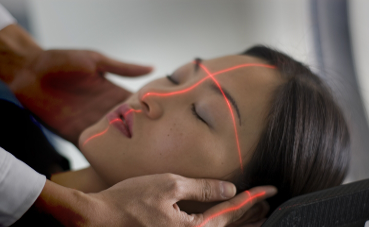2nd gen. RT
Prescription and
segmentation annotation
Sup 147
100% (Final Text)
This supplement defines transfer SOP classes for physician intent and
segment annotations for a new generation of radiotherapy (RT) objects.
This supplement lays out the foundation for additional supplements
covering all the necessary new RT objects.
These include:
- RT Course
- RT Treatment Phase
- RT Prescription
- Conceptual Volume including RT Dose Histogram, RT Dose Samples, RT Dose Image
- RT Segment Annotation
- RT Radiation Set including RT Radiation with records
Important aspects during the development of the new RT objects included:
- Support for legacy and modern equipment
- Use of new DICOM concepts: Enhanced objects, 3D segmentations,
meshes, rigid and deformable registrations
- Separate modelling for specific treatment modalities
- Expandability
The final walk through, line by line reading, of the document was
completed. Final discussions, especially around concept volume, are
reflected in the document.
The supplement was voted Final Text and is becoming part of the
standard.
View details »
Contrast
Agent
Administration
Sup 164
100% (Final Text)
This supplement introduces IODs that describe the administration of
imaging agents. The supplement applies to all modalities in which
imaging agents are introduced into a subject's circulatory system in a
controlled fashion (e.g., CT, MR and XA) involving both automated and
manual administration.
The new SOP Classes describe administration events, flows, pressure,
timings, physio-chemical attributes and pharmacological attributes of
the agent administration and consumables related to the
administration.
- The Planned Imaging Agent Administration SR Storage SOP Class
represents patient specific plans to deliver the imaging agent. The
plan is tuned to the characteristics of a patient and needs of that
procedure.
- The Performed Imaging Agent Administration SR Storage SOP Class is
for reporting the actual administration delivered during a medical
imaging study. The operator may program a delivery system with an
intended delivery. This object captures the program. The delivery
system or a user may deviate from the programmed plan based on a
variety of factors. The actual delivery is captured in this object.
These SOP classes do not describe administration of
radiopharmaceuticals, which is addressed by R-RDSR.
The comprehensive example was presented, discussed and improved. The
example is expected to be a great help to implementors.
The supplement was voted Final Text and is becoming part of the
standard.
View details »
Multi Energy
CT
Images
Sup 188
100% (Final Text)
This Supplement extends the CT Image IOD and Enhanced CT Image IOD to support new types of images generated by Multi-energy (ME) CT scanners.
It describes various ME imaging techniques. While different vendors apply different techniques to achieve Multi-energy images, there is large commonality in the generated diagnostic images. It adapts existing attributes of the CT / Enhanced CT IOD to fit ME techniques.
Multi-energy CT acquires pixel information, which correlates to different X-Ray spectra to enable differentiation, quantification and classification of different types of tissues.
To detect the different X-Ray spectra, Multi-energy (ME) CT imaging uses combinations of different Source(s) and Detector(s) technologies such as current switching X-Ray tubes, spectral detectors, multi-layer detectors, multi-source and detector pairs.
Multi-energy CT data can be reconstructed and processed in different ways to serve a variety of purposes.
- Differentiate materials that look similar on conventional CT images, e.g., to differentiate Iodine and Calcium in vascular structures or to differentiate vascular structures from adjacent bone.
- Quantify base materials to accurately define tissues and organs. The intent is to quantify materials, and to extract regions and organs based on their composition.
- Generate virtual non-contrast images from a contrast-enhanced image rather than having to scan the patient twice.
- Reduce beam hardening artifacts.
- Enhance the effect of contrast such as highlighting Iodine and soft tissue.
The presentation and discussion with the base standard group focused on codes and examples.
The supplement was voted Final Text and is becoming part of the standard.
View details »








